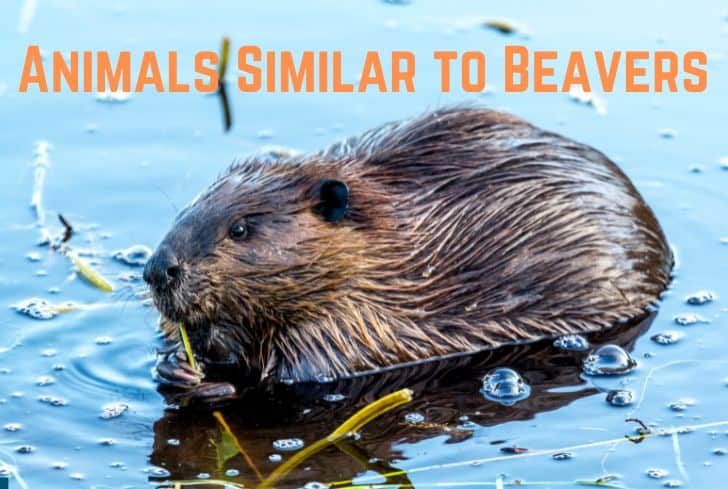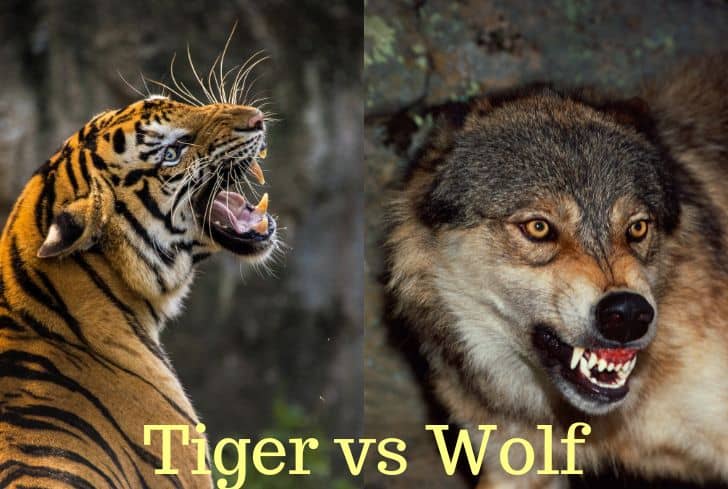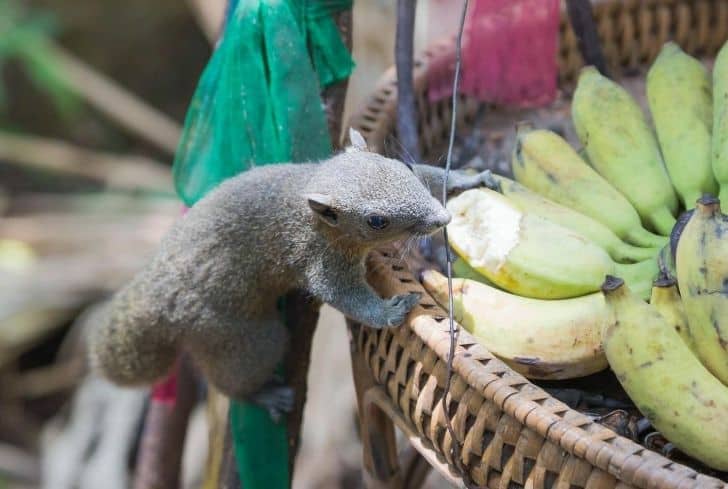13+ Water Snakes of North Carolina (With Pictures)
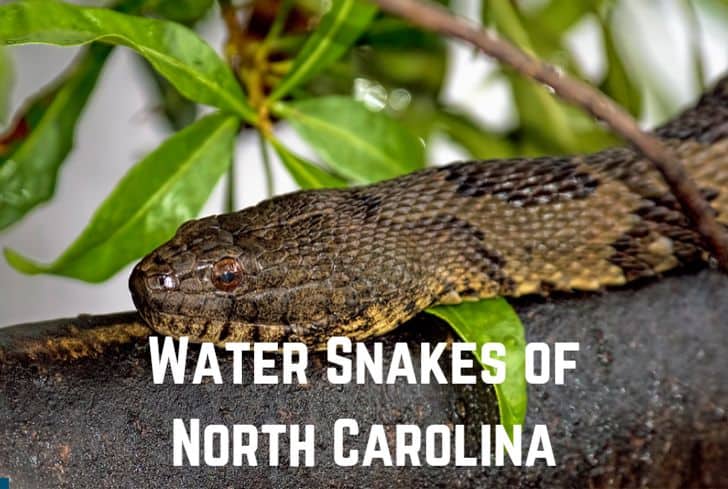
Water snakes in North Carolina are plenty. Some are aquatic, and others semi-aquatic, but all fall under the water snake name.
These water snakes create fascinating experiences for North Carolina residents and tourists, with how they swim across the water, wiggling from left to right, and when they’re sunning themselves on banks of ponds and rivers.
But in the vast state of North Carolina, what specific areas can you find these snakes? And, are they venomous in case you want to approach them?
Worry no more. We’ve dug deep to gather pretty much everything you need to know about these water snakes of North Carolina and compiled the information in this list.
So let’s read on.
13+ Types of Water Snakes in North Carolina
1. Northern water snake
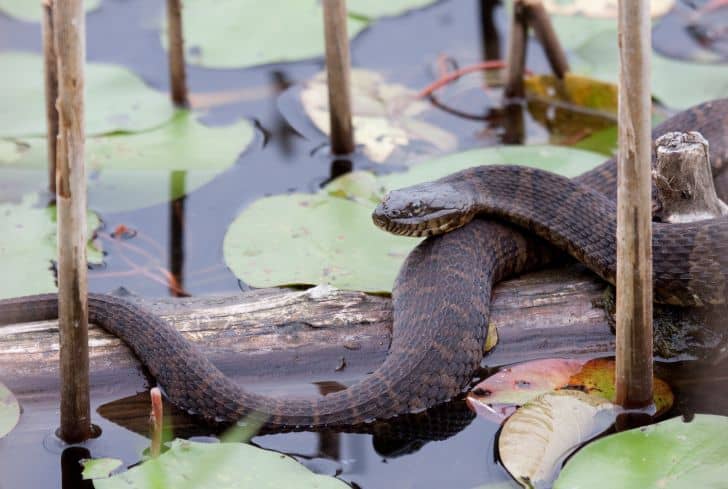
The Northern water snake, also called the common water snake, is the most common type of water snake you can find in North Carolina.
The adults can grow up to about 54 inches, with the females being larger than the males. Their color varies from black, gray, brown, or red, but they all become darker with age.
Northern water snakes prefer permanent water bodies, including lakes, ponds, marshes, and slow-moving rivers and streams. Active during day and night, the water snakes like sunbathing on rocks and logs but will dive in to catch small fish and amphibians when hungry.
The snakes are also quick to flee into the water when disturbed by humans and other predators, although can defend themselves if cornered. They deliver painful bites, moreso sizable individuals, leaving the victim bleeding more than usual, thanks to the anticoagulant in their saliva. They can also release a foul-smelling substance from their glands to ward off predators.
Danger level; non-venomous
Where to find them; everywhere in North Carolina except the southern Coastal Plain
2. Banded water snake
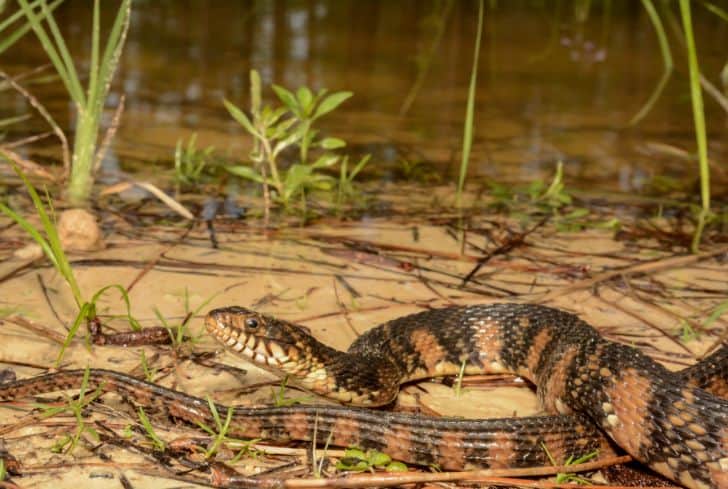
Banded water snake is a medium sized snake, heavily built, and has a wide and flat head.
The snakes are usually brown, gray, or greenish-gray with yellowish bellies and have distinct brown or darker cross bands. But with age, the snakes become darker while the markings disappear. Hence why you can easily mistake Banded water snakes for cottonmouth because of head shapes.
Banded water snakes are nocturnal and live in various habitats such as rivers, streams, ponds, lakes, marshes, and swamps. They also like sunning themselves on branches overhanging over water.
Although docile and harmless, banded water snakes sometimes are aggressive when captured. They rarely bite but defend themselves by releasing a foul-smelling musk from their tail glands.
Danger level; non-venomous
Where to find them; almost all freshwater bodies in the entire state
3. Northern Cottonmouth

Also called moccasin or gaper, the Northern cottonmouth is a medium-sized, dark gray or black snake with a blunt and broad head. But you can find a few individuals with brown coloration. Juveniles have light patterns on their backs.
Northern cottonmouths are agile swimmers and are often seen in ponds, marshes, swamps, and slow-moving streams and rivers. But on rare occasions, you can spot them in prairies, pine forests, and palmetto thickets.
Unlike most water snakes, the cottonmouth is not the type of snake you want to mess with. When threatened, it can deliver a fatal bite if not treated quickly. And even after treatment, it can cause swelling and leave the victim with severe injuries.
The good news is the cottonmouth rarely bites, and when it does, it gives signals. It vibrates its tail against the ground and raises its head up and down. It then proceeds to open its mouth to produce a hissing sound. Enough warning to make you keep your distance, to be fair.
Danger level; highly venomous
Where to find them; coastal plains and some parts of Outer Banks
4. Brown water snake
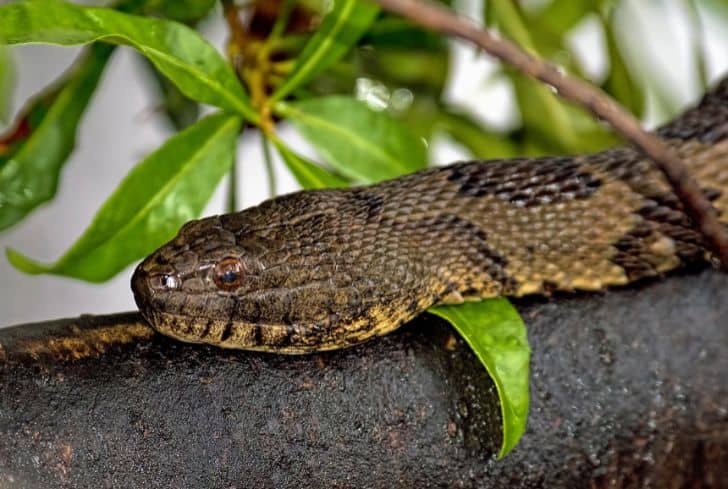
The brown water snake is thick, heavily built, and long, about 60 inches when mature. It has a large head, but the neck is noticeably narrower.
Most brown snakes in North Carolina are brown with alternating dark-brown blotches along their bodies.
Like Northern Water snakes, Brown water snakes prefer permanent water sources because they spend most of their time near water edges. Their habitats include swamps, rivers, lakes, and canals. These guys are also expert climbers, which you can sometimes find in branches overhanging over water. That’s why they occasionally fall in passing boats – but accidentally.
Brown water snakes are harmless and will, in fact, flee to dive underwater when threatened. However, they’re unafraid to bite when cornered.
Danger level; non-venomous
Where to find them; Atlantic coastal plains
5. Plainbellied water snake

Plainbellied water snake is thick-bodied but short, usually about 40 inches. The coloration of these snakes varies from black, gray, brown, and olive, but they all have plain unmarked bellies.
Although you can find Plainbellied water snakes near rivers, ponds, and lakes, they exhibit unusual behavior of other water snakes. They spend most of their time away from water sources, especially when it’s humid or hot, and hibernate in winter. Also, unlike others who hunt their prey, these guys wait patiently to ambush their target.
When threatened, the first defense tactic is to flee into the woodlands. But captured, the snakes produce a foul-smelling musk and can also bite.
Danger level; non-venomous
Where to find them; throughout the state
6. Carolina swamp snake
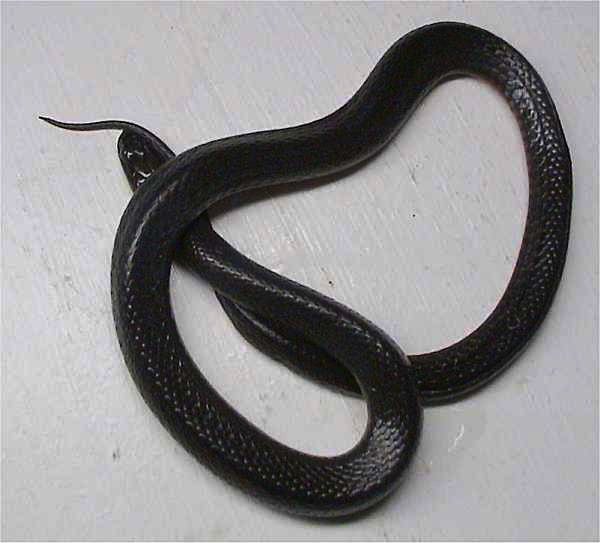
Carolina swamp snake is shy and small, growing up to about 24 inches long. Most of them have shiny brownish backs, and some species adorn two dark stripes down their posterior. The bellies, meanwhile, take bright red or orange-red coloration.
Living in slow-moving water bodies, Carolina swamp snakes rarely venture out of water. In fact, the highly secretive snakes are a rare sight as they spend most of their time in the water. And when they’re out, they hide under logs just on the edges of water bodies.
If you get a golden chance to disturb the reptile, it soars into the water, diving to the bottom. If cornered, it lays flat, releasing a foul-smelling substance from the tail glands. And if you’re not afraid to pick it up, it will hiss to scare you and attempt to strike – but it rarely bites.
The small snake is, however, a threatened species in North Carolina.
Danger level; non-venomous
Where to find them; along the coastal lowlands
7. Mud snake
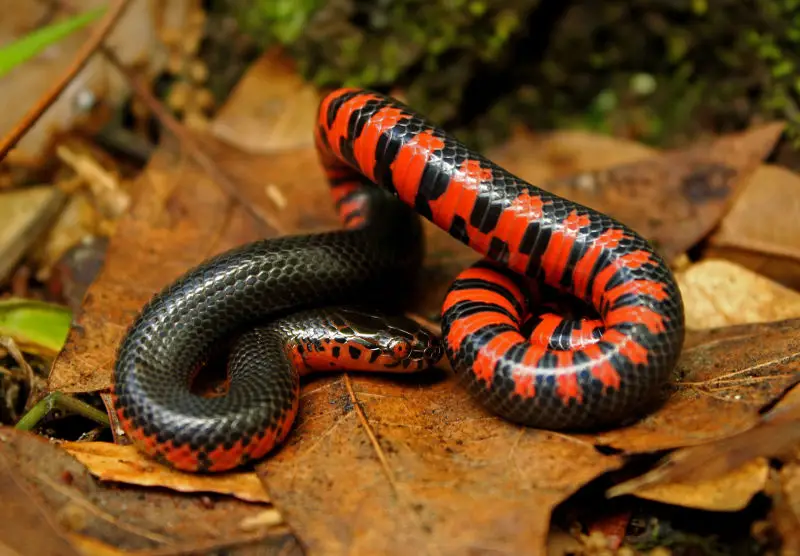
Also called red-bellied mud snake, western mud snake, or just mud snake, the Eastern mud snake is among the largest in the region, with an average adult length of 105 centimeters.
Mud snakes are easy to identify, thanks to their tubular bodies, black backs, bright red bands on the underparts, and pointed tails.
But, like the Carolina swamp snakes, mud snakes are highly secretive and therefore prefer environments with underwater vegetation and rarely leave the water. They only come out for breeding purposes.
The snakes are harmless to people and only use their pointed tails to stab prey.
Danger level; non-venomous
Where to find them; coastal plains
8. Queen snake
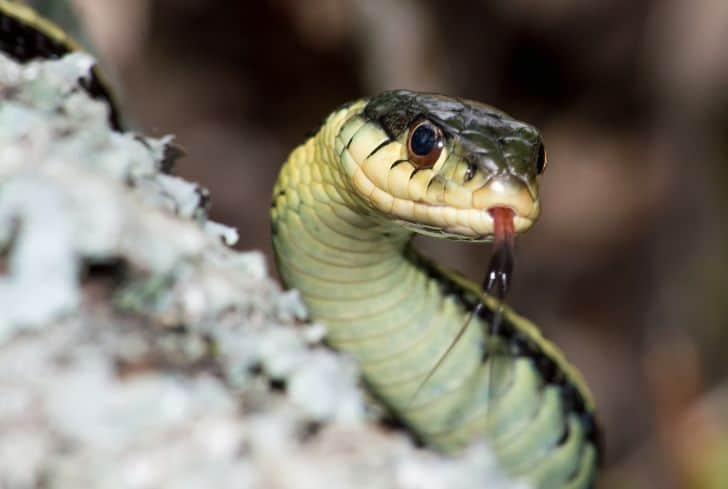
The Queen snake is one of the smallest water snakes in North Carolina, with an average length of about 24 inches.
The coloration of these little guys varies from olive green to brown on the backs, while the bellies are tan or yellow. They also have 2-4 stripes down the sides.
The highly aquatic queen snakes are inseparable from streams and rivers as they prefer moving water. They are diurnal creatures, and when out of the water, you can find them basking on rocks or overhang branches, but not far away from the water source.
They are harmless, and the first response is to flee into the water when threatened. But if cornered, they’ll flatten their bodies before releasing a foul-smelling smuk typical of many water snakes.
Danger level; non-venomous
Where to find them; the western half of North Carolina
9. Eastern Ribbon snake
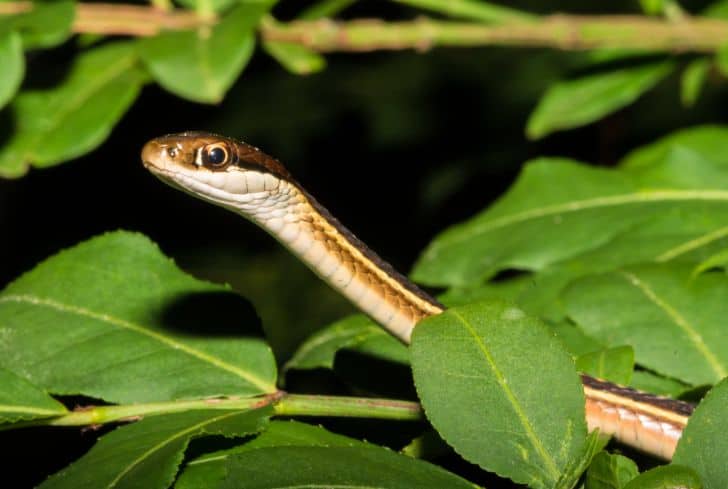
The Eastern ribbon snake is a close relative of the common garter snake.
They have black or brown backs with three yellow or cream stripes down the sides, which makes them easy to mistake for their cousins.
While the ribbon snakes spend significant amounts of time on land, you can always find them near the shores as they’re expert swimmers, diving in to hunt amphibians and small fish.
The snakes are docile and harmless to humans. Researchers use the ribbon snakes to study wetland ecosystems.
Danger level; non-venomous
Where to find them; throughout North Carolina, apart from the western region.
10. Garter snake

The garter snakes are harmless, small to medium-sized snakes, between 18-26 inches long.
Their body coloration ranges from brown to tan to olive, with a pattern of three light stripes running down the bodies.
Garter snakes have a wide variety of habitats, including wet grassy areas, while you can also find them basking on the edges of ponds and streams on warm days.
But when cornered, these snakes will flatten their heads and bodies, coil themselves, and sometimes strike. If you grab one, it will release a foul musk to ward you off.
Danger level; non-venomous
Where to find them; throughout North Carolina
11. Midland water snake
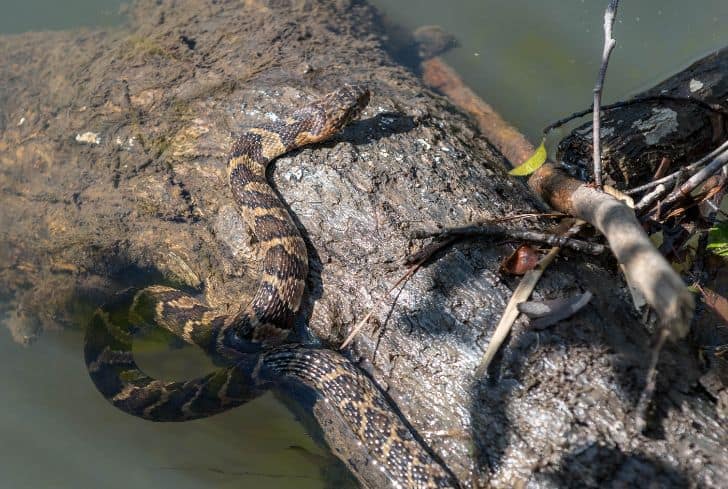
The Midland water snake is a subspecies of the Northern water snake.
The stout-bodied snakes are light brown with slightly brown crossbands near the necks that change into alternating blotches running along the length.
The snakes are only found in river basins, hunting for frogs and other snakes, which they kill through constriction.
Most people are afraid of Midland water snakes because they don’t only resemble the venomous cottonmouths, but they also mimic their behavior to appear dangerous. But they’re not. In fact, they’re not aggressive and avoid contact with humans, although they’ll bite if molested.
Danger level; non-venomous
Where to find them; piedmont areas of North Carolina
12. Rainbow snake
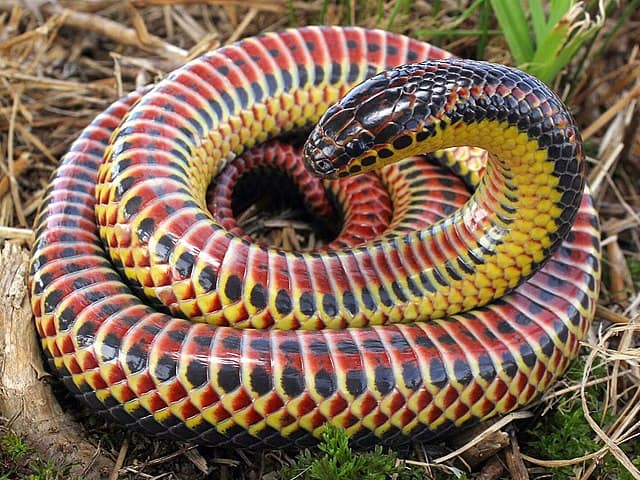
Rainbow snake is a close relative of the mud snake, and they share a lot, including body size, shape, and behavior.
However, this species is the most beautiful, thanks to its gorgeous striped pattern of black, red, or yellow alternating lines down the body and red belly.
Rainbow snakes are highly aquatic and prefer swamps, rivers, and streams. They rarely venture out of the water, even to bask, although some lucky naturalists encounter them crossing roads on adjacent habitats on rainy summer nights.
What’s more, they are harmless and won’t bite when captured.
Danger level; non-venomous
Where to find them; the eastern half of North Carolina
13. Copperhead
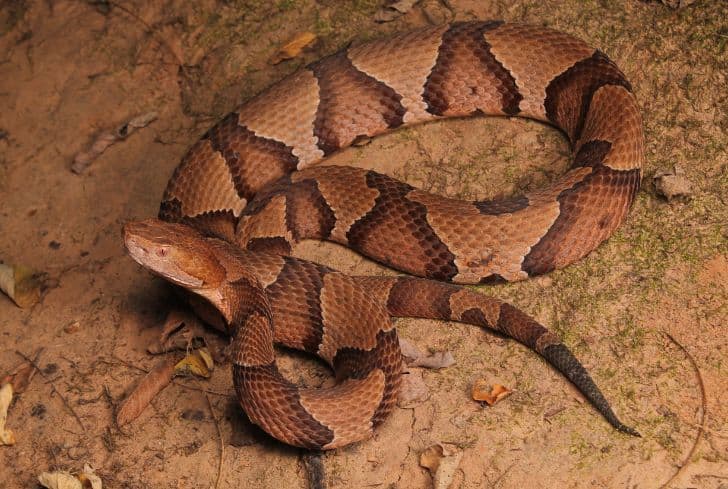
Copperhead is a large (between 60-90 centimeters), stout-bodied snake and one of the most common in North America.
Copperheads are easy to identify thanks to their distinctive triangular heads and hourglass patterns of dark brown and light brown crossbands.
The semi-aquatic reptiles occupy a wide range of habitats, including wetlands and forested, rocky areas, while they also have time to swim.
Social creatures, Copperheads are often found in groups when sunning, eating, and mating. But don’t get close to them. Of course, they won’t confront you, but if you molest them, they deliver painful bites, dangerous to children and adults with poor health.
Danger level; venomous
Where to find them; throughout North Carolina
14. Glossy crayfish snake
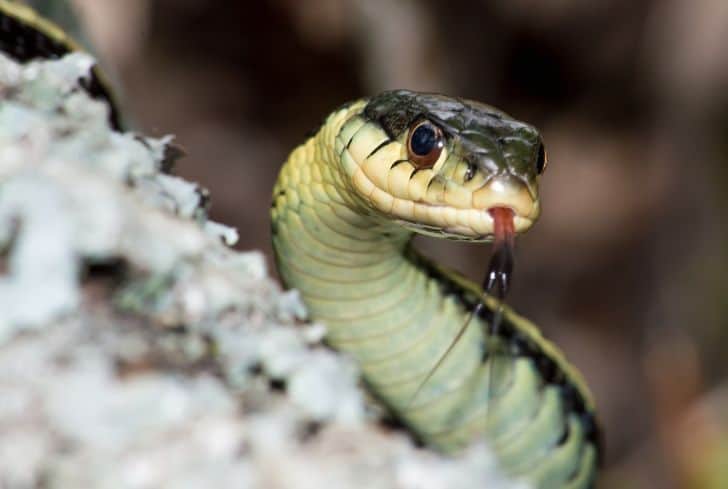
The glossy crayfish snake has a somewhat similar appearance to the queen snake, apart from its dark crossbands, which are difficult to spot due to its brown body.
With a preference of coastal plains, the reptiles are one of the most aquatic snakes. But that makes it rare to find one as they spend most of the time submerged in the water.
According to marine biologists who are lucky to find these snakes, they’re harmless to humans and will always flee into the water when you encounter them. But if you pick one up, it will pretend to bite, but it never does.
Danger level; non-venomous
Where to find them; coastal plains of North Carolina


